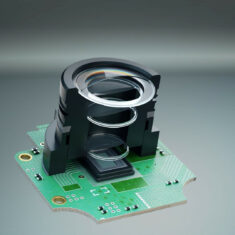Assembly Adhesives for Unmanned Systems
Adhesives are used for a wide array of applications in electronic assemblies and PCBs (printed circuit boards) within UAVs (unmanned aerial vehicles), drones and robotic vehicles, providing robust bonding and protection for components. These electronic assembly adhesives may be made from chemicals and materials such as epoxy resins, silicones, acrylics, cyanoacrylates and polyamides. Adhesives are engineered to bond to different substrates, including metals, plastics, LCP, PPS, and FPC.
Other properties of adhesives that need to be considered for specific applications include shelf life, shear strength, curing time, shrinkage, and thixotropy. Adhesives for electronics used in orbital and space applications may also need to meet NASA outgassing standards.
Electronics Adhesives
Adhesives may be applied to PCBs and electronics using a number of methods. These include screen printing, pin transfer, and via electro-pneumatically controlled syringes. Once applied, adhesives need to be cured, which may take place via methods such as application of heat or UV (ultraviolet) light.
Applications of adhesives for drone and unmanned systems electronic assemblies and PCBs include:
Securing SMDs (surface-mount devices) – adhering devices in place before they are permanently secured via soldering. These adhesives must be non-electrically conductive.
Securing wired connections on PCBs – wire-tacking adhesives prevent the wire from moving around and potentially breaking off, and is especially important in high shock or vibration environments.
Thermal conduction – thermally conductive adhesives are used to dissipate heat from electronics, as well as to adhere heatsinks to electronic assemblies.
Solder alternatives – electrically conductive adhesives may be used instead of solder in high-temperature environments where solder may reflow.
Bonding non-electrical components – non-electrical components may need to be incorporated within an assembly, such as housings and lenses, prisms and other optical components.
Potting – filling an electronic assembly with an adhesive may provide structural strength as well as resistance to moisture, dust, corrosive agents and other chemicals.



















